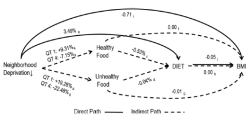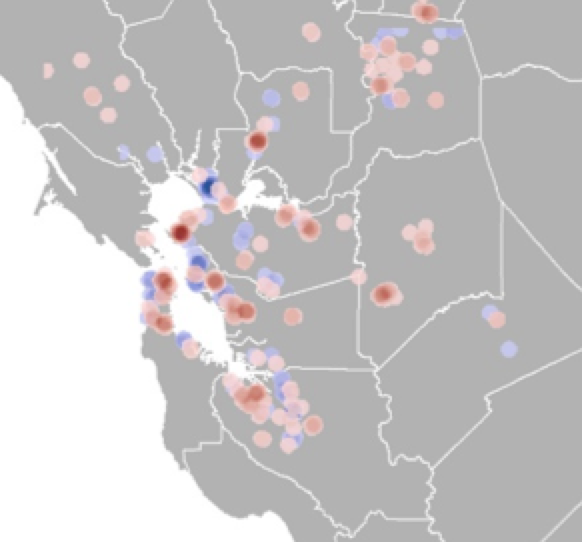Food vendors, neighborhood deprivation, and BMI
 Saturday, April 11, 2015 at 8:42AM
Saturday, April 11, 2015 at 8:42AM Zhang, YT, BA Laraia, MS Mujahid, A Tamayo, SD Blanchard, EM Warton, NM Kelly, HH Moffet, D Schillinger, N Adler, and AJ Karter. 2015. Does food vendor density mediate the association between neighborhood deprivation and BMI?: A G-computation mediation analysis. Epidemiology 26(3):344-52
 In previous research, neighborhood deprivation was positively associated with body mass index (BMI) among adults with diabetes. We assessed whether the association between neighborhood deprivation and BMI is attributable, in part, to geographic variation in the availability of healthful and unhealthful food vendors. Subjects were 16,634 participants of the Diabetes Study of Northern California. Neighborhood deprivation and healthful (supermarket and produce) and unhealthful (fast food outlets and convenience stores) food vendor kernel density were calculated at each participant's residential block centroid. Availability of food vendors, both healthful and unhealthful, did not appear to explain the association between neighborhood deprivation and BMI in this population of adults with diabetes.
In previous research, neighborhood deprivation was positively associated with body mass index (BMI) among adults with diabetes. We assessed whether the association between neighborhood deprivation and BMI is attributable, in part, to geographic variation in the availability of healthful and unhealthful food vendors. Subjects were 16,634 participants of the Diabetes Study of Northern California. Neighborhood deprivation and healthful (supermarket and produce) and unhealthful (fast food outlets and convenience stores) food vendor kernel density were calculated at each participant's residential block centroid. Availability of food vendors, both healthful and unhealthful, did not appear to explain the association between neighborhood deprivation and BMI in this population of adults with diabetes.

